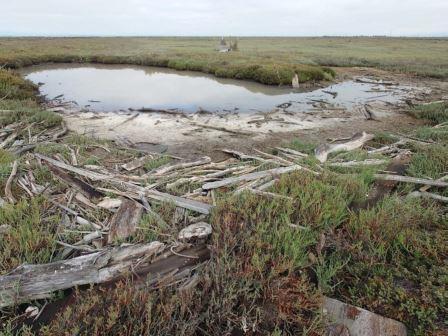Despite fluctuations in acreages between years, the marshes and mudflat south of the San Mateo bridge appear relatively stable between the period 2009 – 2021, in that the relative proportions between different habitat types have not changed significantly. Within a number of restored ponds (e.g., A21, A20, E8A, and North Creek Marsh) there has been larger growth in marsh vegetation when compared to the entire study area. Although the most significant floral colonization and growth of vegetation in many of the restored ponds occurred over the eight years between the end of HEMP1 (2011) and the beginning of HEMP2 (2019), the rate of vegetative growth within some of these restored ponds significantly increased over the two years between 2019 and 2021 suggesting that areas of these ponds may have reached an elevation conducive to vegetation establishment. Marsh expansion also continues to occur outside of some restored ponds including at Calavaras Marsh, the fringe marsh above Pond A6, and at Ogilvie Island. At the same time, there is also evidence of marsh erosion in some locations, including up to 50 meters at Whale’sTail and 10 meters at the mouth of Ravenswood Slough.
Overall, the tidal mudflats directly facing the bay (i.e., not within ponds or sloughs) south of the San Mateo bridge appear to be relatively unchanged since imagery collected in 2016. Although tidal mudflats directly exposed to the bay remain relatively unchanged since 2016 there are some locations with evidence of accretion and/or erosion. There is also a decrease in the acreage of mudflats within restored ponds due to floral colonization.
There may be correlative environmental, climatic, and anthropogenic factors influencing biotic and abiotic distributions that are not accounted for in this study. These include but are not limited to: temperature, precipitation, tidal changes, sediment accretion/erosion, soil and water salinity, and the restoration itself. We encourage the use of these datasets to inform other studies and help elucidate any role these factors might have in vegetation/habitat distributions and the evolution of marshes in the South Bay.




